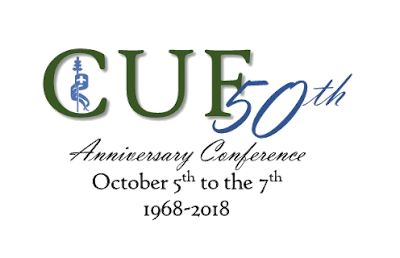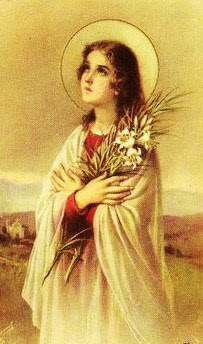 |
| Fr. Paul of Graymoor |
One of the things that binds a family together is the shared heritage, the common tradition, the collection of stories from its history. We need to hear those stories that make up our past history, because it helps us to know who and what we are today. Some of you have heard parts of this story before; others of you are new to this parish; but how we, as a community of faith, came to be is an important part of our history which bears telling -- because it describes the living actions of a Living God who claims us and calls us and Who has set our feet upon the path of spiritual growth and holiness.
Our story begins with a young Episcopal clergyman named Lewis Wattson who was born in 1863 and lived until 1940. Who could have known that his willingness to seek and follow God’s Will for his life would have such deep ramifications for us.
Lewis Wattson (who would come to be known as Fr. Paul of Graymoor) was part of what was called the “Anglo-catholic” wing of the Episcopal Church. Those considered to be Anglo-catholics had a high regard for the Sacraments, especially for the Holy Eucharist and for the sacred priesthood. They knew that the sad separation of the Anglicans from the Catholic Church under the reign of King Henry VIII was a matter of great tragedy, and many of them tried to do all they could to bring about the reunion of Christendom under the headship of the Successor of Peter. Father Paul (as he would be known) actively sought God’s guidance for what he should do within his ministry to accomplish the Will of Jesus Christ.
He was the Rector of a little Episcopal Church named St. John’s, and one morning he knelt down before the altar in the empty church and opened the Scriptures three times. The date was July 9, 1893. The first time the pages opened, it was in the Gospel of St. John, at the words spoken by Jesus when He taught that the Holy Spirit must spring up in those who believe like a well of Living Water; the second time the pages opened it was in St. Paul’s Epistle to the Romans, where he wrote, “We joy in God through our Lord Jesus Christ, by whom we have now received the Atonement.”; the third time the pages opened, it was in St. Paul’s first epistle to the Corinthians, where he recounts the institution of the Holy Sacrifice of the Mass. He made a notation of these passages, and took them as being God’s guidance to him in the foundation of the work which was to be his: he felt that God was calling him to found a religious community within the Episcopal Church which would have the Holy Spirit as its inspiration and guide, and that the doctrine he was to preach was to be the “atonement” -- the at-one-ment of man with God which was accomplished by Jesus Christ upon the Cross. But at the same time, God gave Fr. Paul the feeling that this would not be accomplished immediately, but that some years would need to pass before it would become a reality. Fr. Paul finished his time at St. John’s and was called to a new mission work in Omaha, Nebraska, where he was attached to the Episcopal parish of St. Barnabas – a parish which is now part of the Ordinariate. He continued very successfully in his work there, until finally God made it clear that the time had come. Fr. Paul was to return to the east and take up the foundation of this new work which was to be based upon those passages of Scripture which had been revealed to him, and which took the name of the Society of the Atonement... a new Franciscan community within the Episcopal Church which he was to co-found with a holy woman named Mother Lurana. So his path was set -- he and Mother Lurana founded their Community within the Episcopal Church with their work being the reunion of all Christians -- and finally they and their fellow Atonement Franciscans were received into the Roman Catholic Church on October 30, 1909. They brought with them the unique title by which they knew the Blessed Virgin -- that title which had God had entwined with the saving work of Jesus Christ on the Cross -- that title which recalled Mary standing beneath that Cross -- the title of Our Lady of the Atonement.
I knew nothing of this story when my family and I returned to the United States in 1978 from 5 years of living in England, where I had completed my theological studies and where I had been ordained and had served as an Anglican clergyman. But upon our return, my path was mysteriously united with the path of Fr. Paul. The Episcopal parish to which I had been called was another St. Barnabas Church. It was there that I found a little book which had been left by one of my predecessors... a book entitled “Our Lady and Reunion” which was one of the very few books in existence which was exclusively about Our Lady of the Atonement. I had never heard the title before, and was tempted to discard the book because I thought it was nothing which would interest me -- but for some reason I just couldn’t throw it away. So it remained on my book shelf, where I would look at it from time to time. For some reason the picture of Our Lady of the Atonement developed a stronger and stronger hold on me, and like Fr. Paul, while I was at St. Barnabas I began to realize that my spiritual journey was leading my family and myself to the Catholic Church. But how? My vocation was to the priesthood, but that wasn’t possible at the time. To be a married man excluded me from Catholic ordination -- until that day in 1980 when the Holy Father, Pope (now St.) John Paul II announced that he was establishing a Pastoral Provision for individuals just as myself -- married Episcopal clergy with a vocation to Catholic priesthood, and also it allowed for the establishment of parishes. So the door was opened. And another move was in store. We were to move to Texas where God would reveal what it was He wanted. We arrived in January of 1982 and set about building the foundation which would result in the establishment of this parish which had been waiting in the eternal mind of Almighty God.
The little book about Our Lady of the Atonement was one of the first volumes unpacked and placed on the bookshelves of that first modest house on the northeast side of San Antonio where our first parish office shared space with the washer and drier and our office equipment consisted of an old manual typewriter. It was there and in those earliest days that a promise was made to God; namely, that if He opened the door to us, then we would seek permission to erect the parish under the title of Our Lady of the Atonement. God made good on His side of the bargain -- on August 15, 1983, I was ordained as a Catholic priest, and our parish was canonically erected under the patronage of Our Lady of the Atonement.
All that was thirty-five years ago. At that time we were a tiny and yet optimistic group of eighteen people, worshipping in a rented church, with an unknown future. None of this existed. We couldn’t see what you can see now. And an essential ingredient in getting us here has been the intercession of our Blessed Mother, known to us under her mysteriously beautiful title of Our Lady of the Atonement. So, what of this title?
It embraces two mysteries of our faith: first, the atonement itself – the complete and perfect at-one-ment which was achieved by our Lord Jesus Christ as He shed His Most Precious Blood upon the Cross at Calvary, through which came the reconciliation of man with God, and of man with man, making us "at one" in His Sacred Heart; and second, the role of the Virgin Mary in the perfect atonement given by God – her coöperation with God’s Divine Will at the annunciation, and her participation in her Son's sufferings and death as she stood at the foot of the Cross. The crowning act of redeeming love, Christ’s sacrifice on the Cross, is for all of us the means whereby mankind finds salvation, peace, and unity. It was there upon the Cross Jesus gave us the greatest gift: His precious life. It was there He gave us His Blessed Mother. It was there Mary stood, and there we stand next to her as her children – Children of the Atonement – one family, with one Mother, Mary, and with God as our Father, our Redeemer, and who calls us to live in holiness.

























